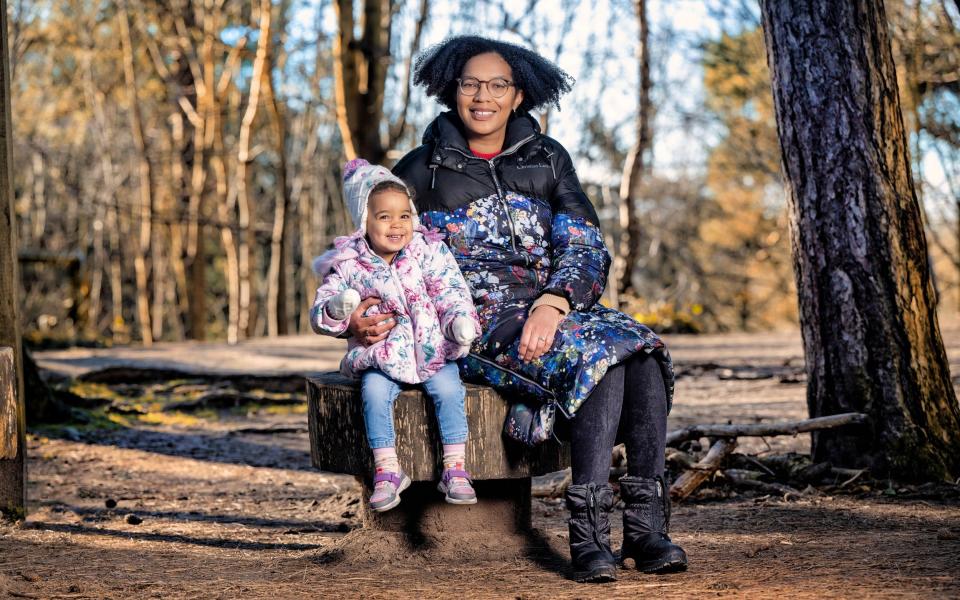Why Britain is becoming a nation of childless cities

- Oops!Something went wrong.Please try again later.
The north London borough of Camden has a shortage of children. Four primary schools closed their doors last year after failing to attract enough new pupils – and Rhyl Community, a small primary school in the heart of Kentish Town, is next in the firing line.
Its head teacher, Helen Connor, says local families are simply disappearing too quickly for the school to survive.
“Another local primary closed in September 2021 because of a lack of pupil numbers. We took over that site. Then another school, five minutes down the road, also closed. Despite all of that we are still not full.”
Just this week, 10 children have relocated and moved out of the school, she said.
“The biggest issue for us, and for most London primary schools, is a lack of affordable housing.”

Since 2010 average house prices in London have soared by 82pc to £508,037. In Camden, the average price for a property is now £1.2m, according to Rightmove. A semi-detached home can set back a family by more than £3.3m.
Such huge rises have pushed growing families out of the city, Ms Connor said. “We have got 60 places in our reception class but we only had around 33 first choice applications. It just doesn’t make us feasible.”
In the east of the capital, four more primary schools are expected to close in Hackney at the start of the next school year. The council so far has blamed Brexit, the pandemic and the housing crisis for families leaving the capital: on average, properties in the borough are selling for £737,902.
A lack of affordable, family-sized homes in these areas means families have no choice but to seek out a life elsewhere, or have fewer children.
Karen Mahood, a mother of two, abandoned London during the pandemic. “We’d been in that house since 2011, extended it and done it up. We thought we would be there long-term. But we both started working remotely during the pandemic, I was looking after our toddler because her nursery was shut – and it got me thinking about what we wanted from our home. We needed more space, especially if we were going to have more children.”
Mrs Mahood and her partner began to look outside of the capital – their search took them further north, where they finally landed on a village close to Merseyside.
“In London our house had two beds and a box room – now we have a four-bedroom house and it is beyond our dreams. You just get more space for your money outside of the city, and now we have the beach five minutes away.”

Finding school and nursery places was easier outside the capital. “In our old neighbourhood the competition for school places was much more intense,” she said. “When we were in London, we heard of people not getting into any of their schools. Here you will get at least one of your three options. In the city people had six choices and still would not get any of them.”
Britain’s fertility rate – the average number of times a woman gives birth – has been locked in decline since 2010. The rate fell to 1.49 in 2022, according to figures published by the Office for National Statistics this week. This is compared with 1.55 in 2021, and as high as 1.94 in 2010.
In London, the rate is 1.39. In Brighton, where parents have held multiple protests over the closure of local authority schools, the fertility rate stands at just 1. The “replacement” rate to maintain a population is thought to be around 2.1.
The shrinking fertility rate is likely to shut down more and more schools. The number of primary school students in Westminster is on track to drop by around a quarter in the decade running up to 2026, Telegraph analysis of government data found. In the London boroughs of Lambeth, Camden, and Hackney, the number is due to decline by 16pc.
Many schools in these areas are already saying that one in four spaces are empty. In Westminster, 17 of the 39 schools in the borough are at this level. In Wandsworth, Hackney and Southwark, the figure is around 40pc.
It is not just in London where this is a problem. Outside the capital, Brighton and Hove, York, Torbay and Redcar and Cleveland are among the areas where primary school students are set to fall by at least 13pc.
The seaside cities of Hartlepool, Plymouth and Brighton have around a quarter of schools significantly below capacity.
Naveed Iqbal, a 40-year-old with three children, said that a combination of high house prices and intense competition for school places had pushed his family out of Brighton. House prices in Brighton and Hove have jumped by 85pc since 2010, hitting an average of £423,052, leaving Mr Iqbal stuck in what he called a “rental trap”.
“We couldn’t find a property that suited our requirements that was also in our budget,” he said. “The market outside of the city is much more affordable and offers a higher quality of life with more green spaces and amenities on the doorstep.
“After moving, we were able to secure the best possible school places for our children,” he added. “The schools available to us in our area benefit from much more green space than those in the city and are often less oversubscribed.”
Across England, there have been a total 115 closures in the past decade, according to government data obtained via a freedom of information request.
But the problem remains particularly acute in cities: London Councils, the local government association for Greater London, warned last month that from now until 2027/28, there will be a 4.4pc drop in demand for reception places across the capital. In seven boroughs it will drop by a tenth. Meanwhile, in secondary schools demand is expected to slump by 4.3pc for Year 7 places on average.
Nursery places too have become scarce – and costs continue to hit new highs. The average price of full-time care for a child aged under two in nursery was £285.31 a week last year. In London, the weekly cost averaged at £394.58, according to the charity Coram.
Starting from April 2024, parents of two-year-olds will be able to access 15 hours a week of free childcare under government plans. This will then be extended to children aged nine months and over from September onwards. But experts have warned the sector’s recruitment crisis is so dire that even with sufficient funding, there is not enough staff available to meet the rising need for childcare places.
Joeli Brearley, of the parents’ campaign group Pregnant then Screwed, found in a survey of more than 38,000 parents that only 9pc said they did not have an issue with local childcare availability.
“Almost half said their local provider has a waiting list of at least nine months. This means thousands of parents have to put their child down for a place in a nursery before they are even born.
“For many parents residing in a big city they will have moved there for work, leaving behind family who could alleviate some of this burden, so a lack of availability becomes an even greater issue.’’
Recommended
Childcare tax trap means parents are better off with £34,000 pay cut

